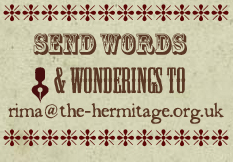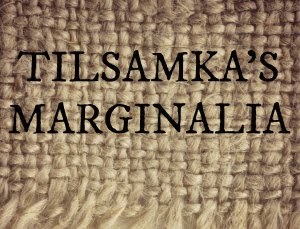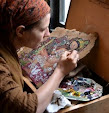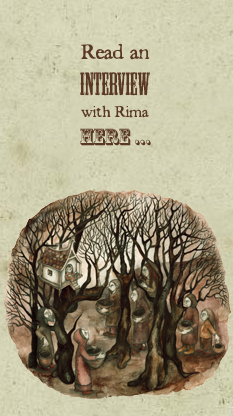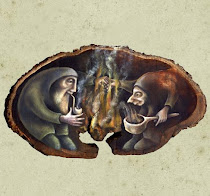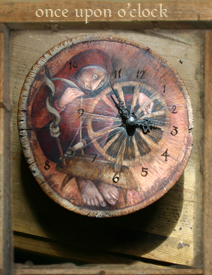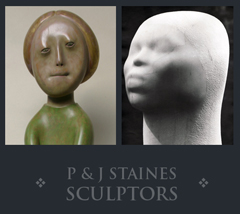
CROSSING PLACES and boundaries are the habitation of fascination for me. The not-quite-one-nor-the-other is a chancy and magical place, where in-between sorts of people wander, outcasts and wisdom keepers, and left over thoughts blow past. Here on these thresholds between times and spaces: the water's edge, the way into the forest, the twilight hour or the dawning, doorways, openings, turning points in years and lives, you'll find the something that you sometimes remember you were looking for, and then forget again.


A grey February stage curtain lifted to reveal the Theatre of Spring, or at least a Master of Ceremonies to announce the programme. But the smell of things has certainly changed, there's whispering in the wings: cast members in costume, and ready to perform. Even on cold days there's promise on the wind, and the days are lengthening again noticeably, like cats stretching after a long winter's nap.


We walked the other day in a nearby deer park where the wind nipped our ears and ran off, followed closely by Macha, hard on its blustery tail. Here we found the crossing places between many things. A tree and a rock were swallowing each other, like that rock-paper-scissors hand game, but I don't know who begun it and I don't know who'll win it. For in the slowest of slow motions, they are grasping each other, describing the edge of things, not one, not the other. In-between.


The woods were beautiful. Green and Grey, like that old New Model Army song I loved as a youngster. Wood and stone all knitted with moss, and knotted together the rocks and the trees made caves. So I went in.

And I looked out through a triangle of tree and rock


At the green-and-grey tapestry across the February sky.

And in the filtered morning light, of a sky of not-quite-any-colour, we examined the moss that covered the granite. It seemed to me a map of another place, spring-green moss lands and grey-blue stone sea.



This is Nature's piebald cipher, her message in green ink telling us Imbolc promises on the hard grey stone of Winter's End.


And in this photograph of Tom's, the stone is blue as a blue blue sea!


The dark branches, strong and knuckled as an old ferryman's arms, stood black against the white sky, and in the grey, I collected pictures.

And at the edge of a pool under a tree, we found a wondrous nest of life waiting: Frog spawn! (which when I was a child, I'm sure was all one word: Frogspawn!)

Such an incredible pudding of baby not-yet-frogs! Black specks suspended in springy jelly marbles, like an eye watching for the right time to leap, or the black dot of yin in yang. And aren't frogs little leaping exemplars of the liminal? Spending tadpole-time as they do, not quite one nor the other.





I'm always amazed that frog spawn in a pool know how much space there is and so only as many as will fit as frogs in the pool will hatch, the rest waiting til that lot leave home before emerging.
Macha has been looking for treasure at the water's edge too lately, but this was the river, not the frogs' birthing pool, thank goodness. She hasn't told us what she found there yet.

Wandering in the woods hasn't been our sole occupation! There's been industrious creating and planning of projects going on. And we've been having conversations about the borderlands of the creative mind too. Whilst making a painting, part of you inhabits this peripheral place, and must make unending this-way-that-way decisions to steer your artist's ship. Somehow you must balance along an internal tightrope whilst you make your work. On one side of this rope is a quick-sand of doubt and self-criticism, refracted through many different imagined lenses. On the other, a lava-pit of overdoing it, killing the work by pressing too hard with your metaphorical pencil. These two-sided danger pits have many names of course, but not tipping into them is a constant effort of balance and bravery.
This innate navigational tool is, I believe, put to use in many areas of life, not just art, and it has an awful lot to do with trusting your gut and sifting wheat from chaff.
And we've been out in the world with projects too! I've had a good selection of my original work framed at long last, so the work is no longer languishing in the bottoms of drawers and the backs of folders, but hanging on the walls of a local wholefood cafe!

For all of February a selection of my original paintings and prints is on display at the wonderful Courtyard Cafe, at 76 The Square, Chagford. It's a warm and friendly gathering place this, where teas and cakes and delicious fare are cooked and served and sold.





Here it is by day and by night (and ten points to anyone who can spot Tom reading Science Fiction in the corner!)



My paintings jostle for space in the corner above customers' heads. And if you are passing through the West Country and fancy a cuppa, or a painting, please do stop by and look.

As for leatherworker Tom, his projects took us on a trip to the last remaining oak bark tannery in the UK: J & FJ Baker & Co, in Colyton, East Devon. He was after leather you see.. to make masks (about which more tales shall follow in due course). It was a wonderful place, all rickety wooden staircases, and hanging hides, and old machinery, and sheds of vats in the floor, and smells, and interesting old men. We came away with four "bellies" and another handsome hide.





We have even ventured in the last few weeks to the Capital City, to see my family. While we were there, we took a train "up to London" as they say when you live on the edge of it. And then we took a bus to the Victoria & Albert Museum to look at magnificent Chinese Robes from the Qing Dynasty. But my attention was particularly caught by this exquisite sculpture in the South-East Asian section of the museum, where we lingered long. She is Sitatara, made from painted, gilded and bejewelled copper in 14th Century Nepal.

This excellent photograph above was taken by Peter Rivera on Flickr, those below are my paltry attempts on a grey day through museum glass. But Oh! She was beautiful.

Tara is a Buddhist Goddess of compassion who is depicted in various forms. She, the White Tara, is said to have been born from the compassionate tears of Avalokiteshvara, the Lord of the World, as he gazed upon the suffering of humanity. She is peace and purity, she is the motivation that is compassion, and the undifferentiated Truth of the Dharma. Tara is often shown (as in this sculpture) with seven eyes - in addition to her two natural eyes, there are four on the palms of her hands and soles of her feet, and one in the middle of her forehead as "third eye". Tara of Seven Eyes is the most common form of the Goddess depicted in Mongolia, and her seven eyes are said to represent her vigilance in compassion and perception of suffering: in the every day (natural eyes), in activity (hands), in progress (feet) and in the spiritual (forehead). Tara is referred to as the Mother of all Buddhas, she is called upon in times of adversity, and for help in overcoming obstacles. The Sanskrit root of her name is tar- "to cross [over]", meaning that the deity serves as a bridge, helping one to cross the Ocean of Existence. Links have been made between her name and the word terra, and even an ancient Finnish Goddess Tar. The word can also mean "tree" or "star" and even "the pupil of the eye".

And what better gem to end with there than the Crossing-Place Eye of our dear hound? Have you ever seen such a strange and outlandish gaze? Through her left eye, Macha looks constantly across a boundary, seeing the light in the dark and the dark in the light. I imagine she sees chancy things in the corners of rooms too, which might account for her nervousness.
I leave you with an earnest wish for light growing in the dark like a speck in frogspawn, as Spring awakens, and Tara's hand in the crossing over.









